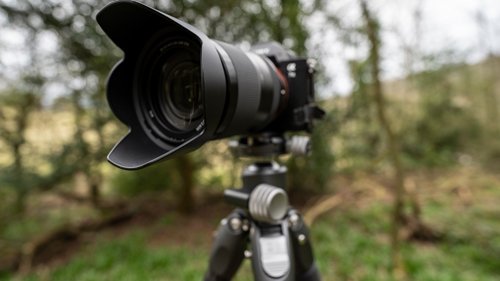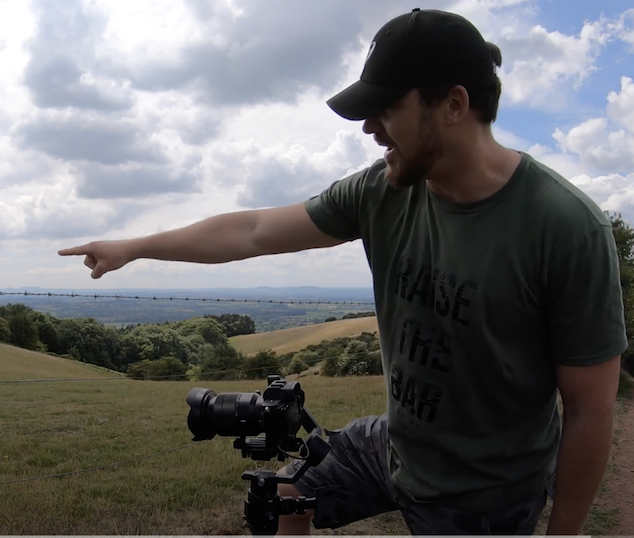DJI Ronin SC Timelapse, Motionlapse, Hyperlapse Tutorial
This is a tutorial on how to use the DJI Ronin SC to create timelapse videos. I’ll share some tips and tricks, and guide you through how and why I do certain things.
The specific model of gimbal I’m using here is the DJI RONIN SC
It’s a small lightweight 3-axis gimbal that was designed for DSLRs and mirrorless cameras. DJI has since added a load more handheld gimbals to their product range, but the Ronin SC remains a firm favourite of mine for shooting timelapse with my Sony Alpha cameras.
Timelapse, motionlapse or hyperlapse?
First off, the elephant in the room.
Am I using the DJI Ronin SC to create timelapse? or is it hyperlapse, or motionlapse? What’s the difference?
I often use these terms interchangeably, and incorrectly, but to define them a little more accurately.…
What is a Timelapse?
A timelapse video is a series of still images played back at a faster rate than it was originally recorded.
What is a motionlapse?
A motionlapse video is a type of timelapse that involves the movement of the camera during the recording process, from a fixed location. This may include pan, tilt, roll or zoom.
What is a hyperlapse?
A hyperlapse is a type of timelapse video where the camera location moves over time.
So what I’m making here is a DJI Ronin SC Motionlapse, but it’s also a “timelapse”, and I’ll let you off for describing it as a hyperlapse too.
Anyway, let’s get started.
For those of you who would prefer to watch than read, here’s a video version…
DJI Ronin SC Motionlapse Timelapse Tutorial Video
Setup
Firstly, and importantly, you’ll need a good solid base.
The little folding tripod legs that DJI provide with the Ronin SC are great. Use them for balancing the gimbal, and for resting your arms while not shooting, but don’t use them for timelapse. You’ll need something much better.
What I like to do is get rid of the DJI legs and replace them with a Swiss-style plate, so that the DJI Ronin SC can be mounted onto a proper tripod.
You’ll probably need something semi-decent, and you’ll definitely need something with a strong ball head. As with the Ronin SC mounted above it, it can be a bit top-heavy.
Nothing too extreme, but the better the tripod and ball head, the greater your chances of motionlapse success. In the video I use a Manfrotto 055, this is a big old aluminium beast that I’ve been using for many years. I’m happy to recommend this for timelapse work.
If you want something lighter, take a look at the Benro 35C Tortoise with GX35 ball head, my current favourite tripod, I have an article on that here. It’s lighter than the Manfrotto 055, but just as big and sturdy.
Planning the timelapse
Timelapse basics really, but being conservative with your motionlapse will often produce the best results. Just because you now have a gimbal that can infinitely pan while shooting timelapse, doesn’t mean you should.
Determining what’s appropriate for a motionlapse is difficult and varied, and perhaps it’ll be dictated by the subject. Otherwise, you should carefully consider the focal length, distance to any foreground, the frame rate and the length of timelapse required.
Again, IMO, being conservative (small c) is often better. Less is more.
Setting the Motionlapse Path
This is super easy and intuitive.
It’s done through the timelapse mode in the DJI Ronin App. You can do this by either using the virtual joystick on the screen of your phone, the physical joystick on the Ronin, or my personal favourite… by using the push-hold mode. You simply move the camera to the start framing with your hands, save the position, move it to the end framing, and then save that. Brilliant.
The DJI Ronin app then allows you to set the interval and timelapse length with ease. DJI has done a great job with that.
Shutter release cable problems
Something worth noting here is that I’ve had quite a few comms issues between the DJI Ronin SC and my Sony A7iii over the shutter release cable. I’m unsure if this is specific to my camera, my cable, the Ronin SC, the firmware or whatever, but I think it’s a power boot-up sequence issue.
Powering up the Ronin first, then the app, and then finally the camera, seems to fix the issue.
Camera settings
I won’t go too in-depth into the camera settings to use while making timelapse videos here, I’ve made posts and videos on that in the past.
In my opinion, for best results, you’ll want to be in full manual-mode including focus and white balance, and have your stabilisation turned off.
With a decent camera, RAW shots, and the use of something like LRtimelapse, aperture priority mode is often acceptable too, but if in any doubt just go manual mode.
Worth a mention here is that if you’re using the shutter release cable, as I do, you’ll also need your camera to be in single shot mode, not timelapse mode. The Ronin will serve as your intervalometer, being in any other mode will confuse things.
Maybe check out this timelapse tutorial video for a more in-depth look at camera settings. This was my first-ever attempt at making a tutorial video, please take it easy on me!
Timelapse tutorial video
During the Shoot
Chill.
You can use your phone for something else while shooting the timelapse, as closing the Ronin app doesn’t shut down the sequence.
No shutter release cable?
If you don’t have a shutter release cable, or if you have a camera that is not compatible with the DJI Ronin SC, you can still make a timelapse with it.
Use your camera’s built-in intervalometer, or failing that, tape one to it! In this case, though, I’d probably recommend that you don’t use the timelapse mode in the Ronin App, but instead, just use a pre-programmed “normal” shot.
The Ronin App timelapse mode gives you a start-stop-start move, which will not align with your own camera’s intervalometer. It’ll look odd. At least that’s my theory, if anyone tests this please let me know.
Watch the DJI Ronin SC Motionlapse Tutorial
Check out my BLOG
I write about things that I’m passionate about. I share more information on my hikes and adventures, wild camps and even the flavours of Pot Noodles that I prefer.
You’ll find articles on camera gear, stock footage, hiking routes, photography, filmmaking and much more.



















